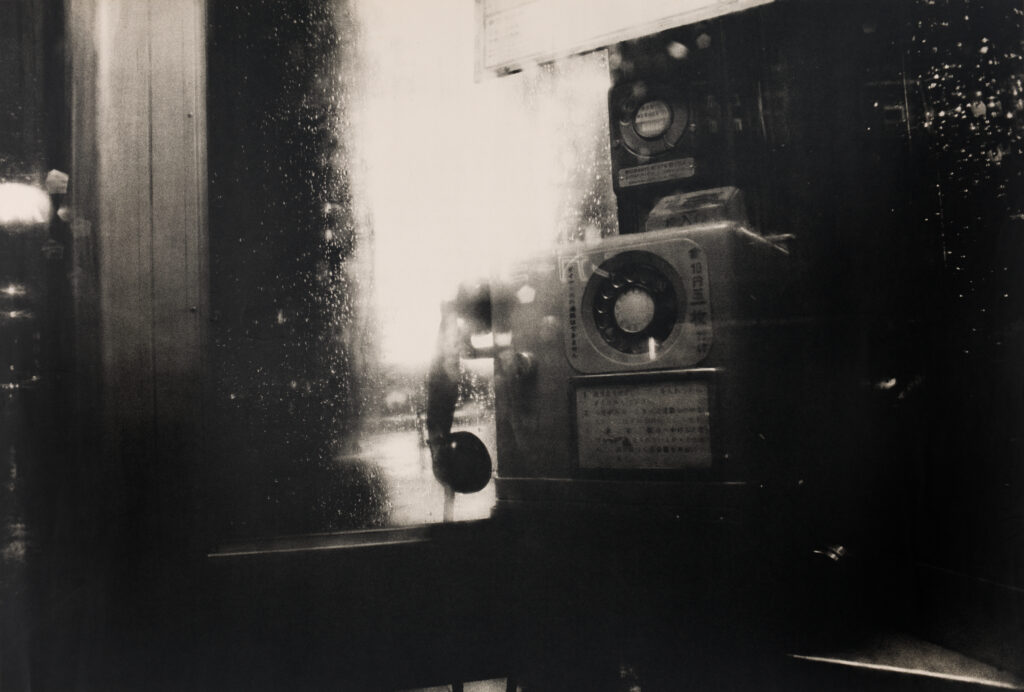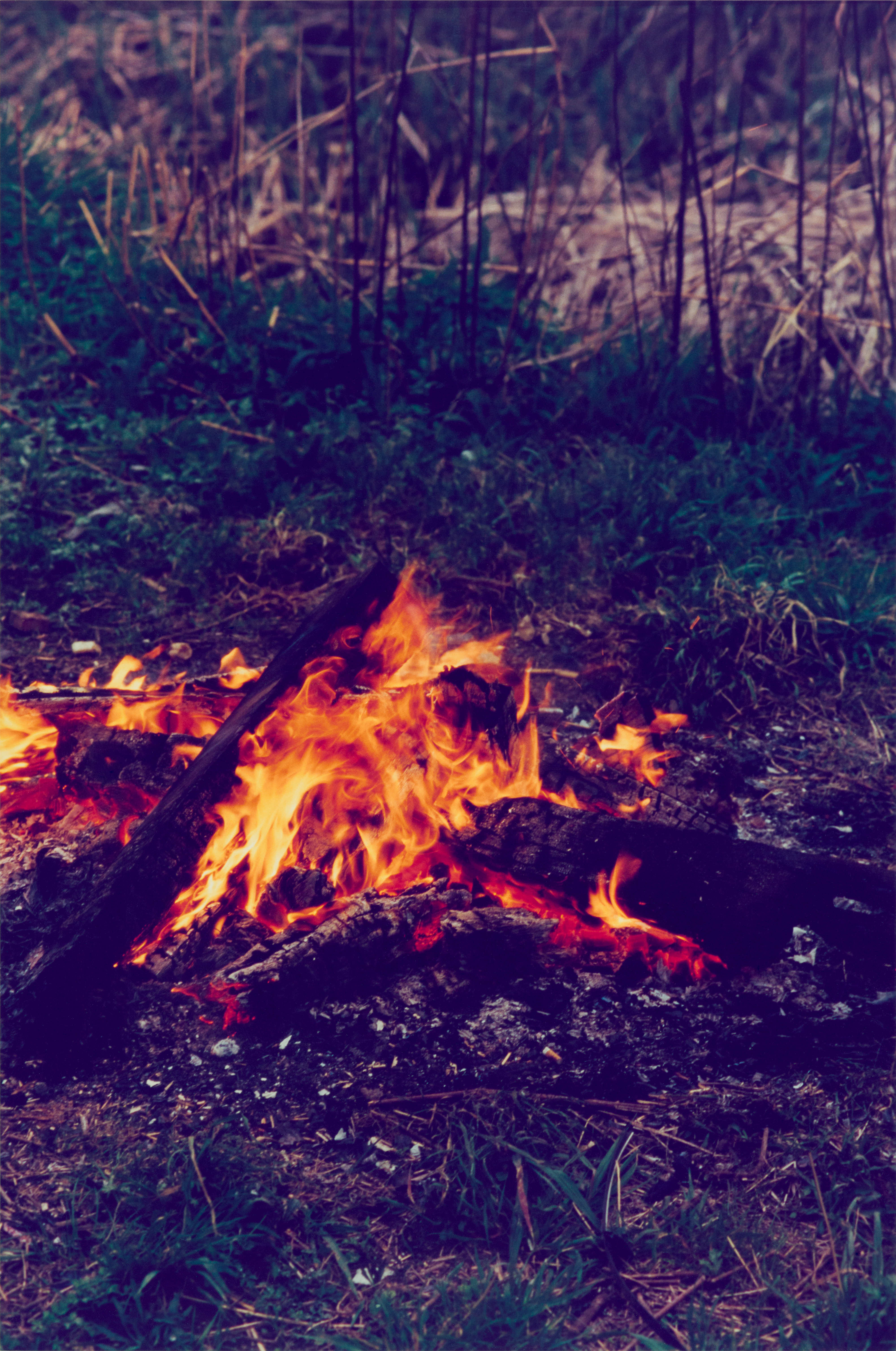The Man Who Became a Camera: Takuma Nakahira
Yokohama City
Takuma Nakahira: Oh, it didn’t drop.
[voiceover] Every day, I don’t hold onto a long hope. Instead, I smoke Short Hope. It’s like shooting. I don’t try to capture the whole world in one stroke. But I have a short hope daily of grasping the world.
Nakahira: It was Yokohama 1967. There are a lot of night shots. This was accidental. I took this by accident. I think I know this person. Because I worked on Provoke. Yanagimoto . . .
It was Yokohama. Foreigner’s Cemetery.
Where’s this? My home. Where’s this? Tokyo Bay. That’s all it’s about in the beginning. It’s not a photobook but a photo-critic-book, is what it was called. That’s because I wrote. That’s how I started. Isn’t this Naomi Yanagimoto? Now he is a critic.
Shinjuku Station Basement Market.
They’re kids? I focused on this and shot it as I passed by with a 28mm lens. This photo was chosen. Dream Island—I’m photographing Dream Island. I shot the river with a 28mm lens.
[points to images in a photobook] Chigasaki Park. Someone sleeping. A cat looking at someone sleeping. He doesn’t know I am taking a photo. He also doesn’t know a cat’s watching him. This cat doesn’t mind if I come close. Now it knows. He doesn’t know I am taking a photo. He also doesn’t know a cat’s watching him. And another cat knows.
Masashi Kohara: It knows about you?
Nakahira: Yeah, it knows I’m a photographer but doesn’t run. [points to a photograph on the wall of a cat] I also photographed Kurobei, my son.
Kohara: Cute.
Nakahira: Casablanca and a white cat. Casablanca in Morocco. There was an apartment when I ran here.
Kohara: Along the Hayabuchi River?
Nakahira: [nods] I moved here. Hayabuchi River was close to Route 466. With a bicycle you could cross it in seven or eight minutes. Just on the right side there. When I used to run, I would run home. You know, there’s a canned juice named Casablanca. I wondered why it had that name and bought it. It’s Spanish for “white house.” I didn’t use sleeping pills. I ran so I could fall asleep. There are no more Casablancas there. The canned juice. The place we just went. We went this way.
Kohara: It’s where we went today.
Nakahira: Across the bridge. It’s where we went today. Just on the right. There’s no more canned juice. There are big apartment blocks. There was a park here called Chigasaki Park. That cat was here. This is a building called Casablanca.
Kohara: Why was the name changed?
Nakahira: This still remains. So, the juice disappeared and it became an apartment building.
[text in book] Takuma Nakahira Chronology
Nakahira: It says, “An Illusion Called Record.” In Japanese. “This incident of Yu Matsunaga, 1977.” “Alcohol-induced retrograde memory loss. Discharged from hospital in December.” I moved back to my family home in 1977. My photobook Aratanaru gyoshi was published in 1983. Since my collapse, I started living in Yokohama. About my photobook Aratanaru gyoshi. “About Takuma Nakahira.” A magazine feature, “In the Period of Aphasia and Amnesia.” Genpei Akasegawa wrote the essay. He was a painter but now he’s a photographer. Daido Moriyama, Shomei Tomatsu . . . Aratanaru gyoshi . . . I become close with this person Tsuyoshi Makiko. That was the situation . . . I can now write everything in Japanese.
Moriyama moved his office to Shibuya. I met him a lot. It was close to my house. He studied Spanish and went to Morocco.
Kohara: Moriyama?
Nakahira: [nods] It was 1977 when he went. Everything was in French. There weren’t lions, as Nakahira was saying. Everything changed to French. Without taking any photos, he came home.
[points to a photograph] This was Daido Moriyama. He started taking photos before I did. He started because he was influenced by Eikoh Hosoe. His elder. Shomei Tomatsu influenced me. I thought I’d study with Tomatsu. Moriyama helped me with that. He taught me how to develop black-and-white film. Daido Moriyama.
[points to a photograph] Who is this person?
Kohara: Fukase.
Nakahira: It’s Masahisa Fukase, huh.
“I’ve forgotten everything so taking photographs was an unavoidable action.”
From Aratanaru gyoshi
[voice on telephone] The time is exactly 12:12.
Nakahira: Exactly 12:12. Nothing’s changed.
[reads a note written on a cigarette box] “April 27. Kohara, 11:45 a.m. arrived. Thanks a lot!”
I have lost my Japanese language ability. To practice I started keeping a journal.
[train announcement] We will soon make a brief stop at Zushi.
Nakahira: I’ll photograph this. Hello.
Tourist: Excuse me, can you take our photo?
Nakahira: Okay!
Tourist: Thank you. Let’s have everyone in the shot. That’s backwards.
Nakahira: Where?
Tourist: Is this okay?
Tourist: We’d like the ocean in the shot.
Nakahira: The ocean? Okay, the ocean.
Tourist: Over here! We’re over here.
Nakahira: Not the ocean, but you? And so?
Tourist: Isn’t it better if you shoot horizontally?
Nakahira: Horizontal?
Tourist: Yeah.
Tourist 2: You can’t take it?
Nakahira: I’m a professional photographer, but it’s hard.
Tourist: It’ll be too precious, so he can’t.
Tourist 2: Do you live nearby?
Nakahira: I live in Yokohama.
Tourist: Thank you!
Nakahira: My grade school was in Hayama. Shimoyamaguchi in Hayama.
Tourist: Hayama Grade School? Where the sakura is pretty?
Nakahira: Yeah. I came from Yokohama.
Tourist: How long does it take to develop?
Nakahira: About two weeks. One week. At least one week.
Tourist: Yeah, and I’ll send it to America. Thank you.
Nakahira: I shot it. I took a weird one. It’s my first time to photograph a foreigner.
[sign] Moriyama Shrine
Nakahira: A long time ago Moriyama said that he’s gonna visit next time. He didn’t know there was a shrine with his name. It’s along the coast, I told him.
[sign] Hayama Daido
Nakahira: When I was doing Provoke with Daido Moriyama we used the bure-boke style. We were influenced by William Klein. When I saw Shomei Tomatsu’s photographs, I decided to be a photographer. I was told I should be taught by Moriyama. He was influenced by Eikoh Hosoe and started photographing before I did.
[sign] Tomatsu Temple
Nakahira: Tomatsu Temple was never released. Near the station by my house.
[sign] Bar Kurobei
Nakahira: I named my cat Kurobei. There was a bar with that name.
September 10, 1977, at a friend’s farewell party, Nakahira blacked out from excessive drinking, and when he woke up the next morning in the hospital, he has lost the better part of his memory and language ability.








